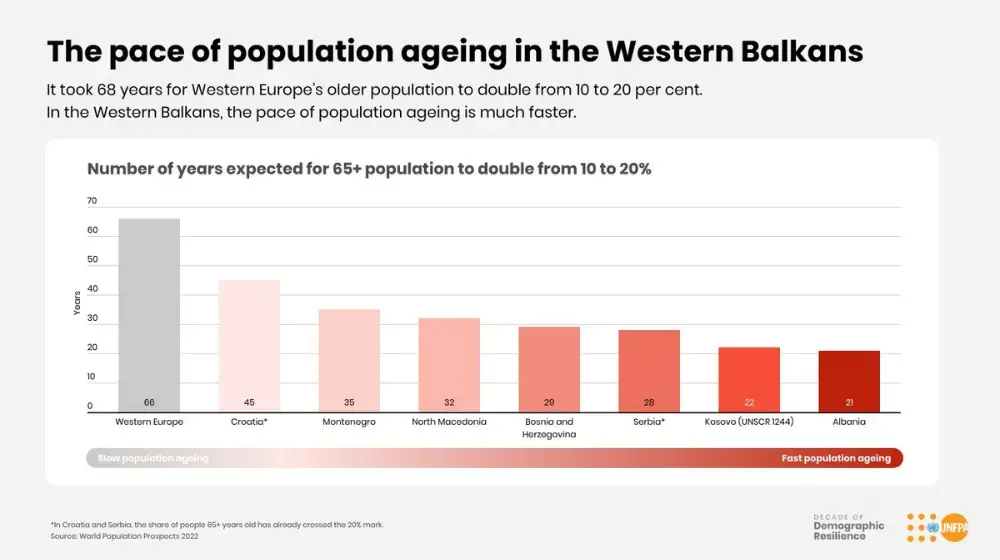YEREVAN, Armenia – On 17 October 2024, the Government of Armenia approved the new Demographic Strategy for 2024-2040 that defines the country’s demographic development priorities and outlines ways to achieve them. The Strategy’s vision is to ensure a balanced and stable population structure that will develop human capital over the long term and improve the quality of life for all citizens from birth to old age.
The Strategy advocates for policies that support human capital development by investing in education, health care and other fundamental areas that support family well-being, gender equality and the empowerment of individuals.
This comprehensive approach addresses the demographic transitions Armenia is undergoing. Like much of the region, birth rates have been in decline over the past three decades, with Armenia’s total fertility now estimated at 1.7 per woman, down from over 2.5 in 1990. Over the same period of time, net migration has been mostly negative. Outmigration has been especially high among younger people, contributing to the rapid ageing of the country’s population.
By prioritizing human capital development over quantitative demographic indicators, Armenia’s new Demographic Strategy aims to create a sustainable future where every person can contribute to and benefit from the country's growth and prosperity. It also includes a flexible review system to adapt to changing circumstances and ensure ongoing public engagement and accountability.
The Strategy was developed with UNFPA support under the leadership of the Ministry of Labour and Social Affairs of Armenia. It represents several years of dedicated research and analysis and takes a holistic approach by addressing a broad range of sectors. If successfully implemented, this Demographic Strategy will drive significant improvements in Armenia’s population dynamics and contribute to the realization of the Sustainable Development Goals.

UNFPA’s Regional Director for Eastern Europe and Central Asia, Florence Bauer, made an official visit to Armenia to meet with government officials and attend the presentation of the Demographic Strategy. “It is important that the Strategy envisages investing in young people – in the quality of health, of education, the possibility to have decent jobs – and investing in healthy ageing, so that the older population contributes to the development of their communities and society, as well as investing in women, in particular through family-friendly policies, creating conditions for them to make the choices that they want to make,” she said.
The Strategy is the result of close collaboration between UNFPA’s leading experts along with a local research team and other international demographers from the Wittgenstein Center for Demography and Global Human Capital, the Charles University in Prague, the Institute of Demography of the Moscow Higher School of Economics and other institutions. UNFPA also provided support through the regional CISPop project.
“We highly value the collaborative efforts that made the Strategy possible,” said Lusine Sargsyan, Head of UNFPA’s Armenia Country Office. “We stand ready to support its implementation, focusing on a people-centred approach as a cornerstone of demographic resilience.”






